How to Carry Your Bag Properly

You may often experience back, neck, and shoulder pain while carrying a bag, thinking that its weight and size could be causing the discomfort. But the truth is, it’s all about carrying the bag correctly, as doing it incorrectly can impact your body. So, let 5-Minute Crafts be your guide to carrying your bag the proper way to keep body pain at bay.
1. Don’t choose a bag with thin straps.
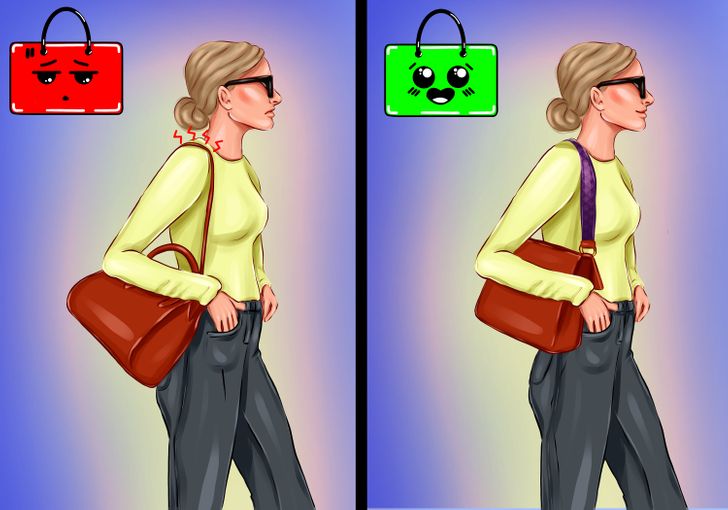
The thin straps of your bag put pressure onto your shoulder muscles that eventually can cause you pain. Having thicker straps helps in distributing the weight of the bag evenly on your body.
If you still experience shoulder pain while carrying the bag, you can pull it in front of you like a baby so that you can relieve yourself from the burden for a while.
2. Don’t place your bag on the floor.
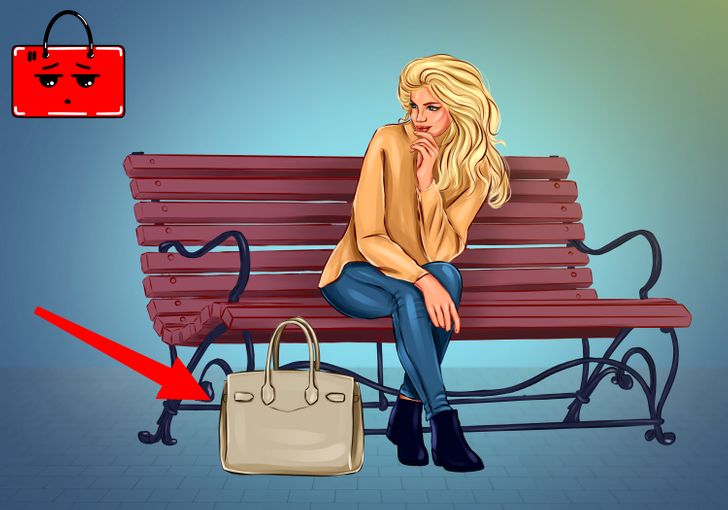
Bags travel with us everywhere, so it’s obvious that they tend to get dirtier faster. You must also be wary of placing your bag on the floor as it may collect a lot of bacteria and germs that can cause an infection.
So, even if you don’t keep your bag on the ground, wipe it down daily.
3. Don’t use the same convenient bag every day.
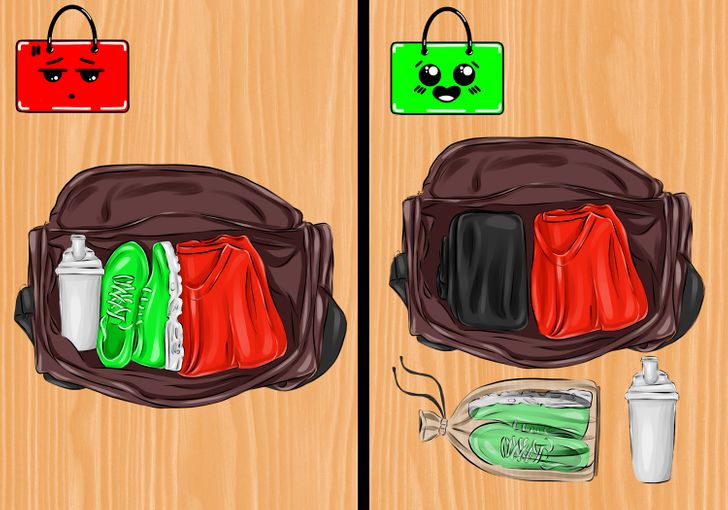
Avoid using the same big bag every day. When you use the same catch-all bag, the daily wear and tear will only add more to its bulk. That’s why you should always keep a separate bag for the gym, or even for extra shoes, rather than just stuffing everything into one sack.
Also, it’s recommended not to carry water in your bag. Hold the bottle in your hand instead as its weight can make the bag really burdensome. You must also empty out any coins from your bag at the end of the day to keep it from getting too heavy.
4. Keep alternating your top-handle handbag between your left and right hands.
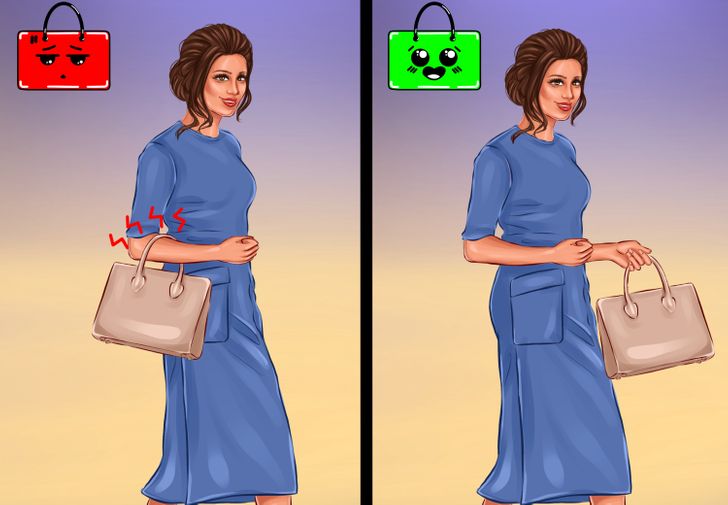
When you carry your top-handle bag on the crook of your arm or drape it on your forearm, it could lead to physical nerve impingement. The muscles surrounding these body parts are not capable of holding heavy items for a long time. Carrying a heavy bag in this way can tire out your biceps and forearms as well.
The correct way to carry a top-handle handbag is by keeping it light and alternating the hands if you’ve been carrying it for a long period of time.
5. Choose smaller tote bags that go well with your body.
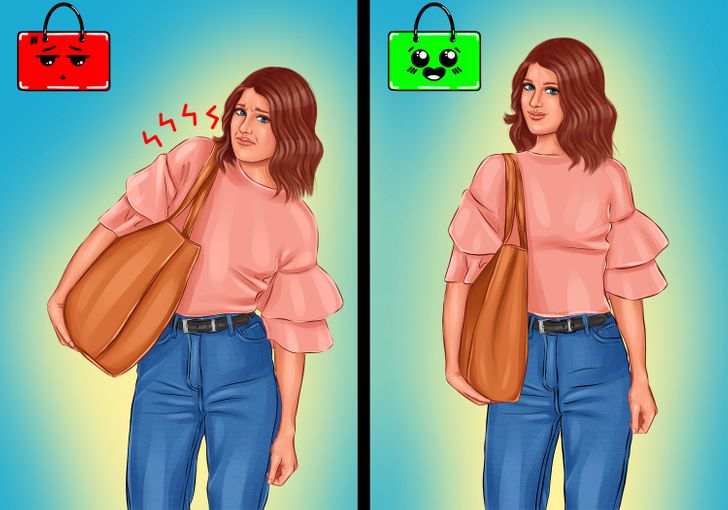
Tote bags are the most preferred bags because of their capacity. But there is a certain way to wear this handbag. When tote bags become heavy, they put a lot of pressure on your shoulders. Therefore, you should go for a smaller size because the smaller the size, the less load you bear.
Be sure to buy one at a length that makes it easy for you to tuck in. Always continue to alternate the bag in between your shoulders every 10 to 15 minutes. This will help with distributing the weight of your bag on your body.
6. Hang the strap of a cross-body bag across your body.

Cross-body bags deliver the best of both worlds: they look stylish and they’re ergonomically correct. They help in evenly distributing the weight diagonally across the body and don’t put a lot of strain on one side as well.
But when you carry a cross-body bag or any bag, ensure that you don’t keep it in one position for too long. Cross-body bags also need some adjusting, like changing your posture to avoid experiencing stiff shoulders. Also, make sure to wear the bag as the name suggests, putting the strap over your body and not simply hanging it on one shoulder, as this will put all the weight on one side of the body.
7. Don’t carry your backpack on one shoulder.
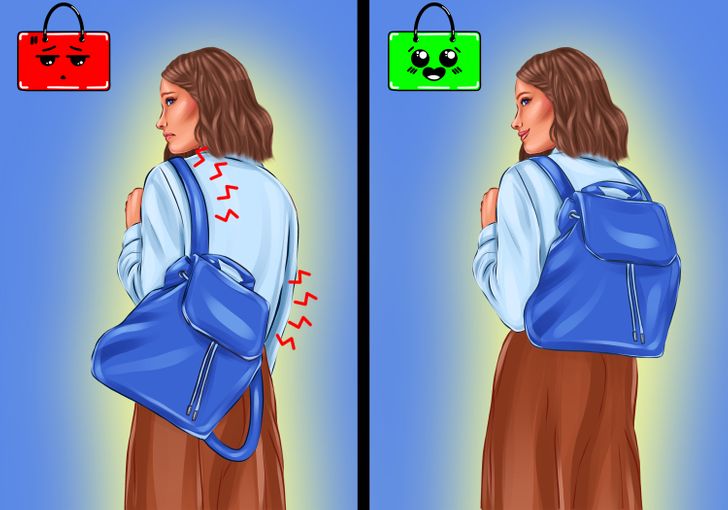
Backpacks are also ergonomically ideal, but many people still complain about the pain these bags cause them. This is because they tend to carry the bag on one shoulder or wear it in a way that it hangs too low on their backs. These habits tend to cause strain on the body.
The best way to carry these bags is to put the straps on both shoulders so that the weight is evenly distributed across your torso. Be sure to choose a backpack that has wide and padded straps since they offer maximum comfort to your shoulders. Also, don’t forget to adjust the height of the straps to ensure that they’re not hanging too low or too high.